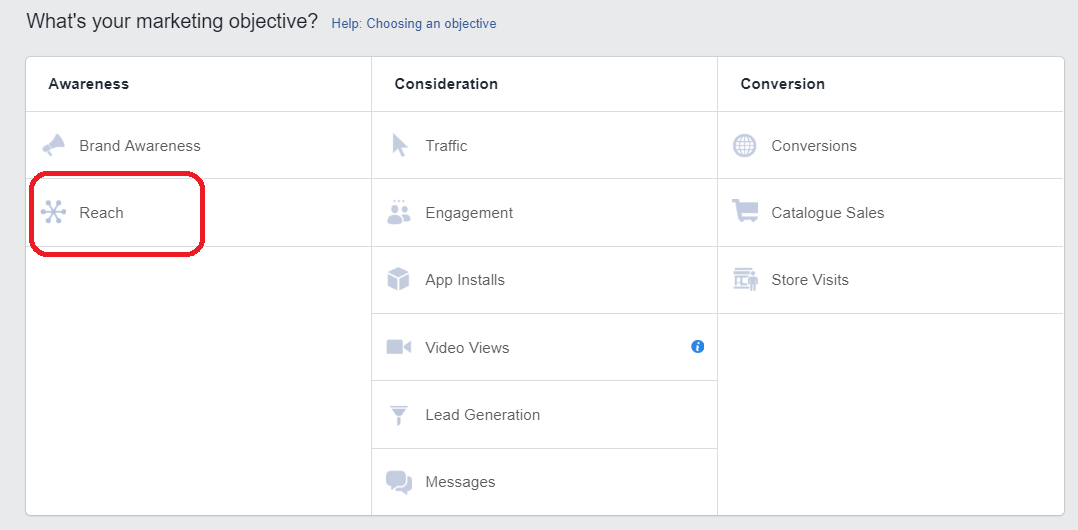How to Use the Reach Objective to Lower the CPA on Facebook
When the goal is to acquire new customers, most use the conversion or traffic objective.
This is exactly what I’d do.
The conversion objective optimizes your ads to be served to people who are most likely to convert, whereas the traffic objective focuses on serving ads to people who are most likely to visit your site.
Both objectives work well for acquiring new customers on Facebook.
But did you know you can also use the reach objective to lower your overall CPA and, in some cases, it will outperform conversions and traffic? In this article I’ll show you how this works.
How the reach objective works on Facebook
The reach objective can be found on Facebook at the campaign level.
 By choosing the reach objective, Facebook will do its best to serve your ads to everyone in your audience, regardless of any action they may take.
By choosing the reach objective, Facebook will do its best to serve your ads to everyone in your audience, regardless of any action they may take.
For example, if you run a conversion objective targeting five million users, Facebook won’t serve your ad to all five million people. Of the five million people, Facebook uses data from your pixel and serves your ad to people who are most likely to convert.
If Facebook thinks a user will not convert, they are not shown the ad.
The reach objective will serve your ad to EVERYONE, regardless of their intent.
Using reach to increase conversions
If you use the reach objective and target an audience size of five million, thinking you’re going to lower your CPA…

However, if you’re going to use the reach objective to target smaller audiences – say, someone who visited a product page but did not order – well now you have a greater chance to lower your CPA over conversion, and here’s why.
Let’s say we create a product page and a custom audience of 5,000 people who have visited that page but did not order.
If we run the conversion objective, Facebook will serve our ads to people in that audience of 5,000 people who are most likely to convert. If Facebook thinks only 1,000 people will convert, it will show that audience of 1,000 people the ad more frequently than the other 4,000 people.
When you optimize for purchases, you pay Facebook in impressions using conversions. There are two issues here:
1. Your CPM will be higher than using the reach objective because Facebook will serve your ad to people most likely to purchase. This isn’t necessarily a bad thing, as you want to show ads to people who are most likely to buy, but your CPM may be lower using the reach objective and they may convert at a higher rate
2. Facebook may over-serve your ad to a segment of your audience and exclude the others.
If you decide to use the reach objective for this custom audience of 5,000 people, Facebook will serve your ad to EVERYONE. And because it’s not optimizing for users who are most likely to purchase, your CPM will typically be lower, AND you get to set the frequency cap so you don’t over-serve your ads.
Test reach vs. conversion
With the information above, what I like to do is split test conversion vs. reach for smaller retargeting audiences to see which brings the lowest CPA.
Reach won’t ALWAYS bring you a lower CPA than conversions, but sometimes it will and it’s worth testing.
If you want to send traffic to a blog post or landing page, I’d also test reach vs. traffic to see which brings in the lower CPC for retargeting audiences.
Only test the reach objective with small retargeting audiences. Do not test reach vs. conversion for cold audiences with millions of users, as reach will almost always under perform.
How are you using the reach objective?
Very few marketers use the reach objective unless they are running large branding campaigns where the goal is to reach as many people as possible.
It’s a useful objective to use at the middle and lower levels of your funnel where audience sizes are smaller and you want to keep tabs on ad frequency.